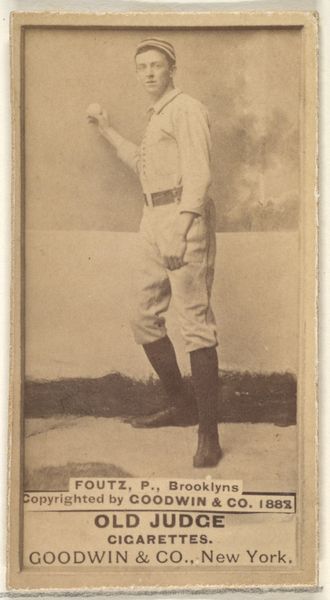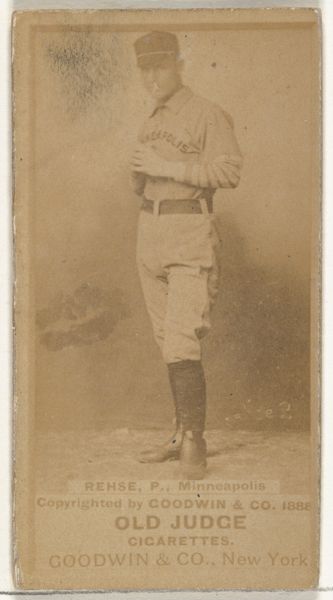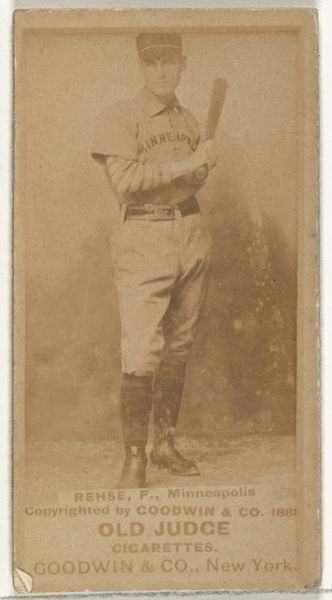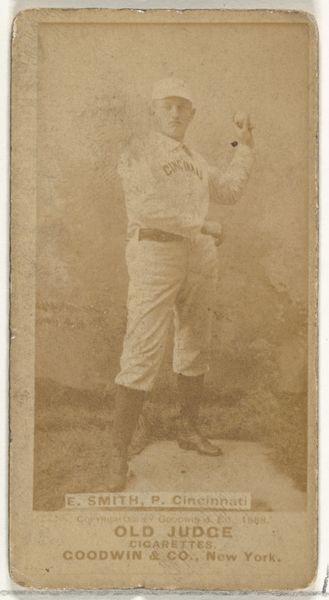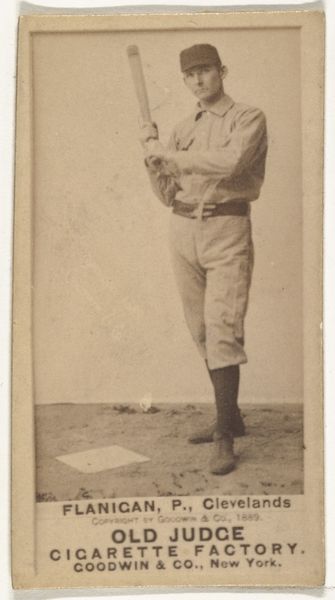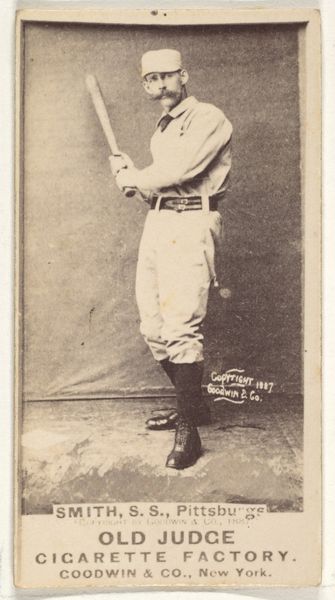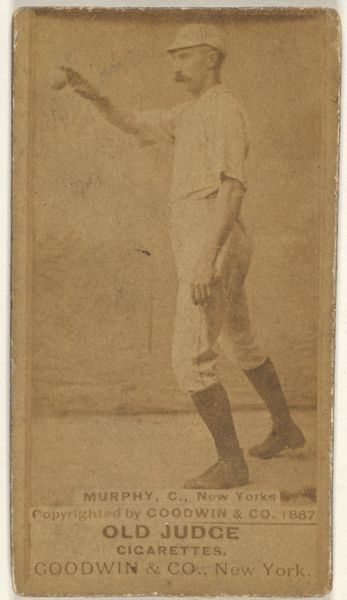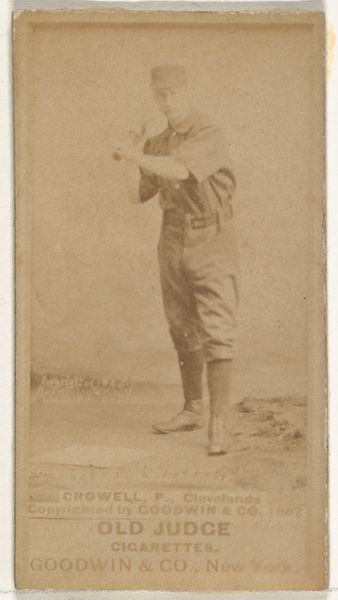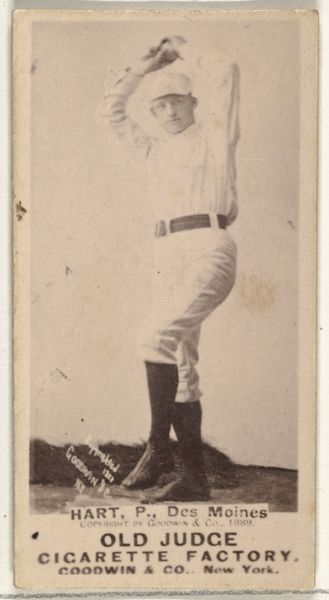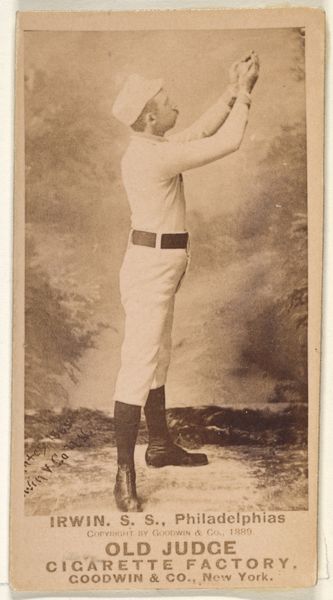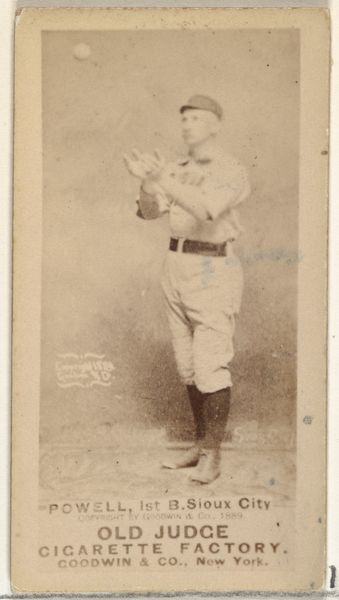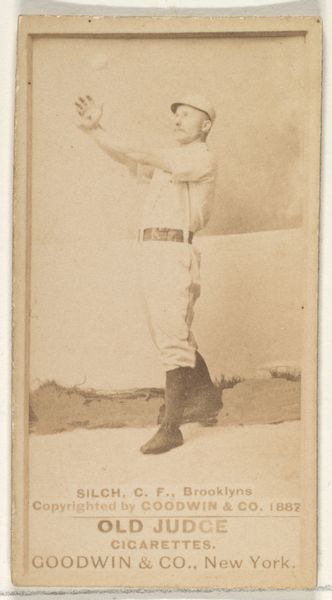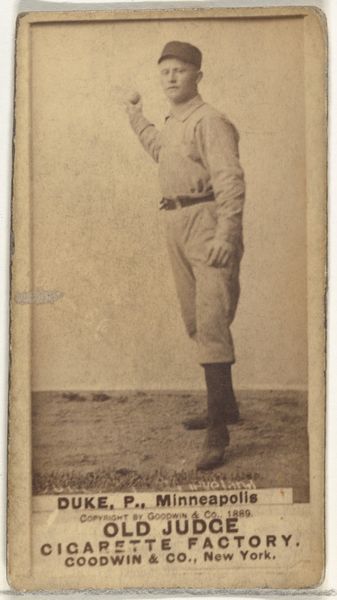
William Hildreth "Bill" Hawes, 1st Base, Minneapolis, from the Old Judge series (N172) for Old Judge Cigarettes 1888
0:00
0:00
drawing, print, photography, albumen-print
#
portrait
#
drawing
# print
#
baseball
#
photography
#
men
#
athlete
#
albumen-print
Dimensions: sheet: 2 11/16 x 1 3/8 in. (6.9 x 3.5 cm)
Copyright: Public Domain
Curator: Let’s consider this 1888 albumen print featuring William Hildreth "Bill" Hawes. It’s part of the "Old Judge" series by Goodwin & Company, initially created as trade cards for Old Judge Cigarettes. It feels incredibly nostalgic, doesn't it? Editor: Absolutely. There’s a real stoicism to this portrait, even an air of defiance. He stands poised, holding his bat, with a distinct 19th-century seriousness that captures something uniquely American about the period, particularly how celebrity and commerce began to intersect. Curator: It’s fascinating to think about how sports figures were first marketed and commodified in this era. Consider the societal backdrop: mass industrialization, the rise of leisure culture, and new forms of visual media coalescing to elevate athletes like Hawes to celebrity status. The racial implications cannot be ignored, given the stark exclusion of non-white athletes at this time. Editor: And this image participates in a ritual of myth-making. Notice the baseball bat he’s holding. The bat isn't merely equipment; it's a symbol of strength, skill, and even power—akin to a scepter in a royal portrait. These early baseball cards were totems of a rapidly professionalizing sport, capturing specific heroic moments of players who were, predominantly, white men. Curator: It prompts the question: How does this kind of visual representation shape our collective memory and perception of sports history, and how do these images reflect broader social hierarchies? Were Black athletes consciously excluded from similar portrait series at that time, contributing to an imbalanced narrative about baseball, masculinity, and power? Editor: Indeed. While ostensibly advertising cigarettes, these images actually fostered a cult of personality. Look at the framing; how he gazes off slightly—it isn't merely an image but a deliberate construction meant to resonate with a specific consumer base that idealized a vision of early American masculinity tied to the game. Curator: So, this isn’t simply a sports card, it’s a potent reminder of the intertwined nature of sports, capitalism, and the construction of identity, making it invaluable to discussions of social justice in historical representation. Editor: Exactly. Seeing it through the lens of symbolism, we realize it's less about a game and more about creating cultural icons.
Comments
No comments
Be the first to comment and join the conversation on the ultimate creative platform.
